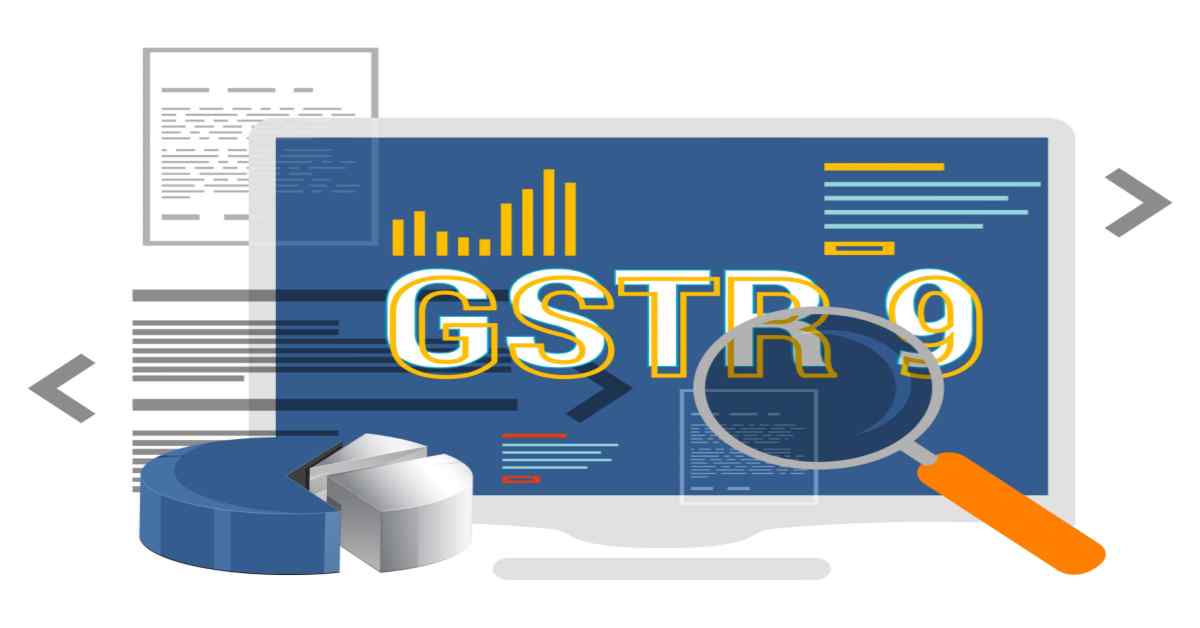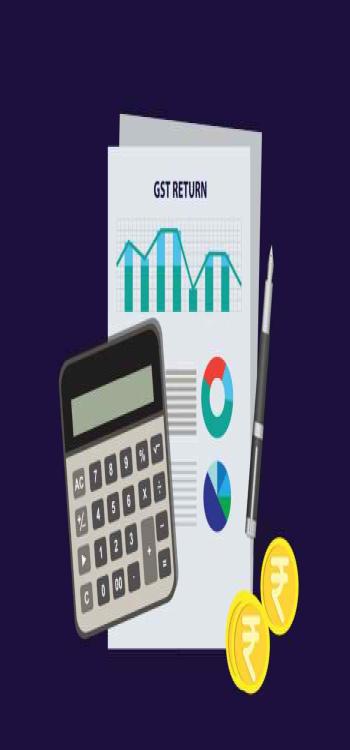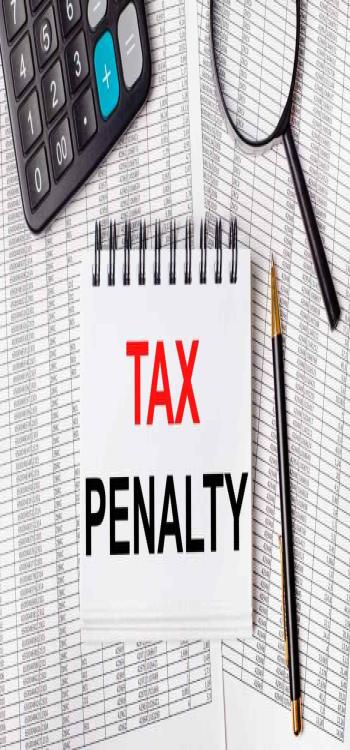The Goods and Services Tax is a recently Introduced innovation in the Indian Taxation system. If you are a business owner who is trying to learn how GST works, you are in the right place. Read till the end of this article to get a complete picture of how to implement GST in your business.

Things we covered for you
What is GST?

GST is an innovative taxation regime that was introduced in India a few years ago. GST replaces multiple indirect taxes that were being collected by the State and Central Governments with a singular taxation system.
In addition to having removed the complexity of having multiple overlapping taxation systems, GST is a move towards making the country easier for running a business. All this has been facilitated by the help of an information technology layer that was added to the Indian Taxation System. You can read more about GST in detail here.
How to Register for GST

Before registering for GST, you must know if you are exempted from GST filing. Here’s what you should consider.
Read: Stamp Duty and Property Registration Charges in Hyderabad
Is it Compulsory to Register for GST?
GST registration is not mandatory for all businesses. It only becomes mandatory if your annual turnover exceeds a certain threshold.
- If you are a business owner who deals in Goods then the annual turnover threshold for registration is ₹40 Lakh. you have to register for GST.
- If you run a service business then the turnover threshold is ₹20 Lakh.
Steps to Register in GST
GST registration can be done online from the GST Portal. Follow these steps to register for GST
- On the Registration, the page fills in the requested information accurately.
- Click Proceed after entering the details.
The Different Types of GST Returns

GST Return is an essential GST documentation that contains sales details. If you are a business with a GST registration you must file GST returns. It is a form that contains information on your sales, purchases, input and output tax collected. You must file(upload) this form on the GST Official Website(www.gst.gov.in), before the GST return due date.
There are different types of GST returns as per the GST Act. There is a GST Return Form corresponding to each GST return format as well. The GST Filing due dates for each type of return is slightly different. They are as follows.
GSTR-1 Return
GSTR-1 is a return of outward supplies.
GSTR-1’s due date depends on the annual turnover of the business. If your business has an annual turnover of more than 1.5 crores, then the due date for GSTR-1 returns is the 11th day of the next month.
GSTR-2 Return
The GSTR-2 return is a return on inward supplies. You must file this return before the 15th of each month. You must ensure that the details furnished in the receipts match the details the supplier has filed.
Read: Power of Attorney: Meaning, Types and Important Clauses
GSTR-3 Return
This is a monthly GST return. The due date of this return is the 20th of every month. Part 3A of this return is automatically generated from the information furnished in Form GSTR-1 and Form GSTR-2.
If you are a taxpayer, you can discharge the liability you have towards tax, interest and penalties are included in Part B of the GSTR-3 Form.
GSTR-4 Return
GSTR-4 is a quarterly return form. This form is for the composition supplier. Its due date is 18 days from the end date of the quarter – April 18, July 18, October 18 and January 18.
The taxpayer can file the quarterly return form based on details contained in Form GSTR-4A.
GSTR-5 Return
If you are a Non-Resident Taxable person, then you must file the GSTR-5 return before the 20th of each month, within 7 days from the last day of GST registration. If GSTR-5 applies to you, you must file details of both inward and outward supplies.
GSTR-6 Return
This return form is applicable for Input Service Distributors. If you are an Input Service Distributor, you must file this GST return before the 13th of every month.
GSTR-7 Return
If you are registered under GST for TDS (Tax Deduction at source), then you must file GSTR-7 returns. The due date for this return is the 10th of every month. The GST Council will publish the details in FromGSTR-8 which is available in Part C of Form 2A and Form 4A.
Read: Understanding HRERA: Key Information for Haryana Homebuyers
GSTR-8 Return
This is a monthly return for E-commerce operators. The deadline for this return is the 10th of every month.
GSTR-9 Return
This is an annual GST Return. If you are a taxpayer, you must file it on or before December 31st of every year. If you are –
- A Non-Resident taxable person
- Casual Taxable person
- TDS deductor
- TCS collector
Whoever is registered under the GST Composition scheme, then you only have to file the GSTR-9 Return if the annual turnover is more than ₹2 Crore. But you have to audit the returns via a Chartered Accountant or Cost Accountant.
GSTR-10 Return
You must file the GSTR-10 return when you cancel your GST registration. The due date for this filing is 3 months from the cancellation date of the registration.
GSTR-11 Return
This GST return is for UIN holders. If you have a UIN under GST to claim a refund on taxes paid on inward supplies you must fill out this form.
Features of the GST Payment Process

Here are some features which make the GST payment process different from the pre-GST legacy tax regime.
Read: CSC Mahaonline – One Step Forward Towards the Digital India Dream
- Transactions are paperless. An electronically generated challan is used in all modes of payment. There are no manual challans.
- Paying tax is convenient. The taxpayer can pay tax anytime by providing hassle-free, anytime anywhere.
- The tax collection format is logical and the remittance of tax revenue to the Government accounts is also fast.
In general, the tax payment, accounting and collection procedures have been simplified.
GST Late Filing and Payment

The late fees on GST return filing depend on the type of return that has to be filed.
Based on this GST late fees are classified into 3 categories.
1. Annual GST returns late fees
For Annual returns, the late cost is ₹100 per day under CGST law and ₹100 per day as per SGST law (a total of ₹200/per day). The maximum penalty is limited to 0.25% of the taxpayer’s total turnover.
2. Nil GST returns Late fees
You must file a Nil GST return (no tax to be paid) within a certain timeframe. If you miss the deadline for the NIL GST return, then you will be fined ₹200per day (₹100/day under the CGST act and ₹100/day under the SGST act).
For each day you fail to file the returns the fine will get added. But the total fine collected cannot exceed ₹5000.
3. Non-Annual GST returns Late fees
If you do not file the Non-Annual GTS returns on time, you will be fined ₹100 per day as per the CGST Act and also ₹100 per the SGST act. In Total, you will be accumulating a late fee of ₹200 per day. But the total fine that is collected cannot exceed ₹5000.
GST Payment Due Dates
The Following are the due dates for different categories of GST payment
- General – 20th Day of the Next Month
- Composition – 18th Day of the Next Month of Quarter
- Non-Resident – 20th Day of the Next Month
- Input Service Distributor – 13th of the Next Month
- TDS Deductor – 10th Day of the Next Month
- TCS Collector – 10th Day of the Next Month
Who has to Pay GST?

GST liability is the liability of the party to pay GST. The general rule regarding GST is that if you are a supplier of goods or services, you have to pay GST. But there are specific rules in the case of imports and other notified supplies. In the case of these exceptional conditions, GST liability, or the duty to pay will be on the receiving business.
When should GST be paid?
Gst should be paid by the taxable business or person during the earliest of the below 3 events.
- When the supply of goods or services is completed
- When the invoice has been issued
- When the payment has been received.
How can NoBroker Help
Despite how simple the GST tax regime is, keeping track and following up on various GST deadlines, fines and procedures might be confusing, especially if you are a small business owner. Accounting and adapting your business to new GST council guidelines can feel challenging.
Don’t worry, the NoBroker Legal Services team has you covered. Our experts can assist you in understanding various procedures and clarifying any confusion you have regarding the filing process. Contact the NoBroker Legal Services Team and make your GST filing process straightforward and stress-free.

FAQs
Here’s how you can file your GST Returns–
Visit the GST portal.
Use your 15-digit GST Identification Number(GSTIN) while uploading the invoices on the GST Portal.
Upload your GST invoices to the GST portal. There will be an invoice number issued against each invoice.
Once you have uploaded your GST invoices, Inward and outward returns you must file your cumulative monthly returns. If you spotted any errors in the returns you filed, you have the option to correct them and refile them.
The outward supplies will be available in the GSTR-2A returns form. You have to verify and modify the details so that they are accurate.
Furnish the details of inward supplies in the GSTR-2 form.
If you are a supplier, you can either reject or accept the modification of details of inward supplies given in form GSTR-1A.
If your business is registered to GST, You must file GST returns GSTR-1, GSTR-2, and GSTR-3 every month. Additionally, there is an annual return that you have to file once a year.
If your business generates annual revenue of more than Rs. 20 lakhs (or Rs. 40 lakhs for a Business which sells products), you must register for the Goods and Services Tax.
ITC or Input Tax Credit (also known as ITC value) is one of the defining features of GST. It is the GST that you pay on the purchase of Goods or Services that you use in your business. What makes ITC significant is that it is possible to reduce ITC from the GST payable(subject to certain conditions) on sales by the taxable person.
RCM or Reverse Charge Mechanism under GST refers to the process by which GST is paid by the receiver instead of the supplier.
Under the GST taxation system, generally, it is the supplier who pays the Tax. However, there is an exception to this scenario, where the Receiver must pay the tax.
This is applicable in the case of Imports, Purchases from a GST unregistered dealer or in the case of a supply of notified goods and services(such as unshelled/unpeeled Cashew Nuts, Tobacco leaves etc.)










